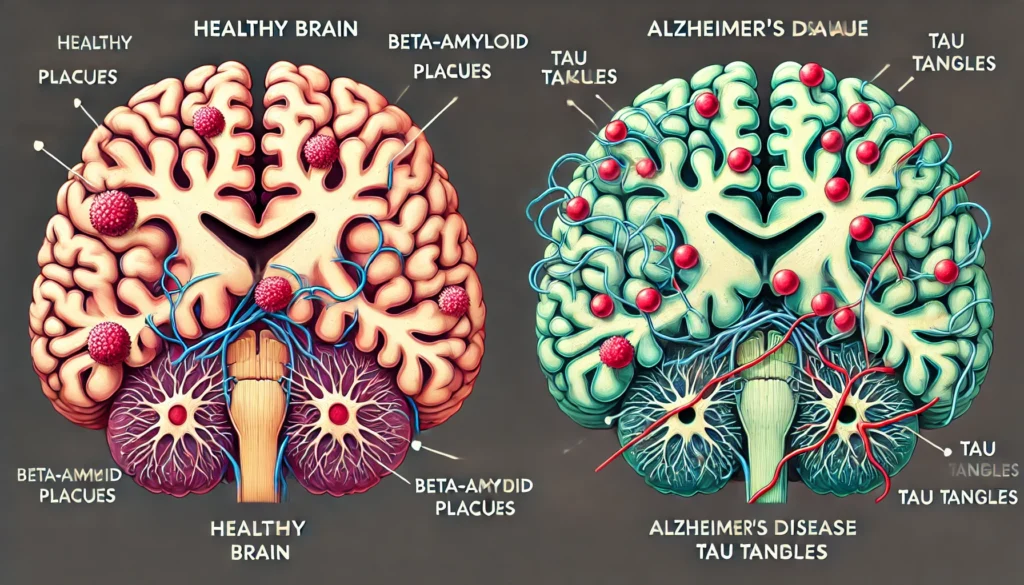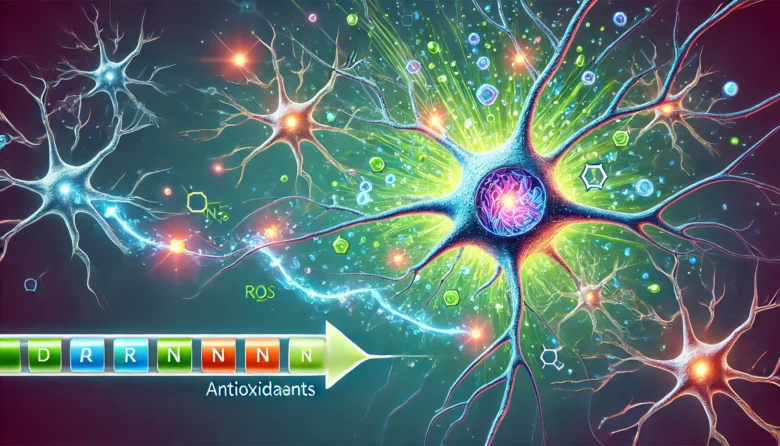Fun Fact: Did you know that your brain contains around 86 billion neurons, all constantly communicating to keep your body functioning? When neurons begin to function improperly, they can give rise to severe health issues known as neurodegenerative disorders.
Neurodegenerative disorders refer to a group of conditions where nerve cells (neurons) in the brain and spinal cord progressively deteriorate. These diseases, such as Alzheimer’s disease, Parkinson’s disease, and amyotrophic lateral sclerosis (ALS), are not only devastating but are also connected by a common thread: the role of brain chemistry in their progression.
In this blog, we’ll dive into the fascinating (and slightly complex) world of neurodegenerative diseases, focusing on the chemistry behind them. You’ll learn what goes wrong at a molecular level and why this matters in developing treatments for these challenging conditions.
What Are Neurodegenerative Diseases?
These disorders impact the central nervous system, leading to a slow decline in the structure and function of neurons. Neurons are crucial cells that process and transmit information through chemical and electrical signals. When they are damaged, the effects can be devastating, leading to cognitive decline, motor dysfunction, and other symptoms associated with diseases like Alzheimer’s and Parkinson’s.
But what is the chemistry behind this cellular destruction?
The Role of Protein Misfolding
One of the major chemical processes involved in neurodegenerative diseases is protein misfolding. Proteins are complex molecules that need to be correctly folded to function properly. In neurodegenerative diseases, certain proteins fold abnormally, leading to toxic clumps called aggregates.

For instance, in Alzheimer’s disease, the buildup of beta-amyloid plaques and tau tangles disrupts normal neuron function. Beta-amyloid proteins, which are typically harmless, become misfolded and form plaques outside of neurons. Meanwhile, tau proteins inside neurons become tangled, further impairing communication between cells. These combined disruptions are what lead to memory loss and cognitive decline in Alzheimer’s patients.
Similarly, in Parkinson’s disease, a protein called alpha-synuclein misfolds and forms clumps called Lewy bodies in the brain. These aggregates interfere with dopamine production, leading to motor symptoms like tremors and stiffness.
The Chemistry of Oxidative Stress
A contributing factor to neurodegenerative diseases is oxidative stress, which occurs when there is an imbalance between harmful free radicals and antioxidants in the body. Free radicals are reactive molecules that can damage cells through a process called oxidation.
While oxidation is a natural part of cellular metabolism, excessive free radicals can overwhelm the brain’s defences, leading to damage to proteins, lipids, and even DNA. This oxidative stress accelerates neuron degeneration, particularly in diseases like Alzheimer’s and ALS. Over time, the brain’s ability to fight off these damaging molecules weakens, which is why oxidative stress is often linked to ageing and age-related neurodegenerative disorders.
Glutamate Excitotoxicity: When the Brain’s Chemistry Goes into Overdrive
Glutamate is the brain’s most abundant neurotransmitter, responsible for sending signals between nerve cells. While glutamate is essential for normal brain function, too much of it can be harmful. In a process known as glutamate excitotoxicity, excessive glutamate leads to the overstimulation of neurons, causing them to become damaged or die.
Excitotoxicity plays a significant role in diseases like ALS and Huntington’s disease, where neurons become overstimulated due to abnormal glutamate levels, contributing to motor and cognitive decline.
Case Study: Alzheimer’s Disease and Beta-Amyloid Plaques
Let’s take a closer look at Alzheimer’s disease as a case study of how neurodegenerative diseases progress chemically. In Alzheimer’s, beta-amyloid plaques are a hallmark of the disease. These plaques form when beta-amyloid proteins are misprocessed, creating sticky fragments that accumulate in the spaces between neurons.
Over time, these plaques interfere with the synapses, or communication points between neurons, leading to the disruption of memory and learning. But it’s not just the plaques—the tau tangles that form inside neurons further disrupt normal cellular processes, eventually leading to cell death.
What’s interesting about Alzheimer’s is that the symptoms don’t manifest immediately after these plaques and tangles start to form. The disease can begin its destructive work years, even decades, before memory loss becomes noticeable, showing just how complex the brain’s chemistry is.
Advances in Treatment: Can We Target the Chemistry?
Understanding the chemical processes behind neurodegenerative diseases has opened new avenues for treatment. For example, scientists are exploring ways to reduce protein misfolding and aggregation. One promising approach is the development of beta-amyloid inhibitors for Alzheimer’s disease, designed to prevent or reduce the formation of plaques.
Additionally, antioxidant therapies are being tested to combat oxidative stress. These treatments aim to restore the balance of free radicals and antioxidants in the brain, potentially slowing down the progression of diseases like ALS and Parkinson’s.
Another exciting area of research is glutamate receptor blockers. These drugs aim to reduce the harmful effects of excitotoxicity by preventing excess glutamate from overstimulating neurons, offering hope for conditions like ALS and Huntington’s disease.
However, while these treatments are promising, neurodegenerative diseases remain challenging to treat because of the brain’s complexity. Many therapies that work in animal models don’t always translate to human success, but ongoing research gives us hope for better options in the future.
Conclusion: Why Chemistry Matters in Neurodegenerative Diseases
The chemistry of neurodegenerative diseases reveals a complex interplay of proteins, molecules, and oxidative stress that can gradually damage the brain. Understanding these processes is critical not just for developing treatments but also for early detection and possibly even prevention.
As research progresses in understanding the molecular processes behind these diseases, we may eventually discover methods to safeguard our neurons from protein misfolding, oxidative damage, and excitotoxicity. Until then, advancements in medicine and research offer hope for those living with neurodegenerative conditions and for future generations who may be able to avoid them altogether.
Author’s Note
As a science enthusiast, I find it fascinating to explore the inner workings of the brain and how chemistry plays such a vital role in our health. I hope this blog helped simplify a complex topic and provided insight into the ongoing battle against neurodegenerative diseases.
G.C., Ecosociosphere contributor.
References and Further Reading
- Alzheimer’s Disease: Chemistry and Pathology
- Parkinson’s Disease and Lewy Bodies
- Mind Over Matter: How Ice Baths Can Improve Mental Resilience – Deep Dive Wellness. https://deepdivewellness.com/blogs/news/mind-over-matter-how-ice-baths-can-improve-mental-resilience
- Milwaukee Neuroscience Conference To Explore The Inner Workings Of The Brain – Neuroscience News. https://neurosciencenews.com/milwaukee-neuroscience-conference-inner-workings-brain/




